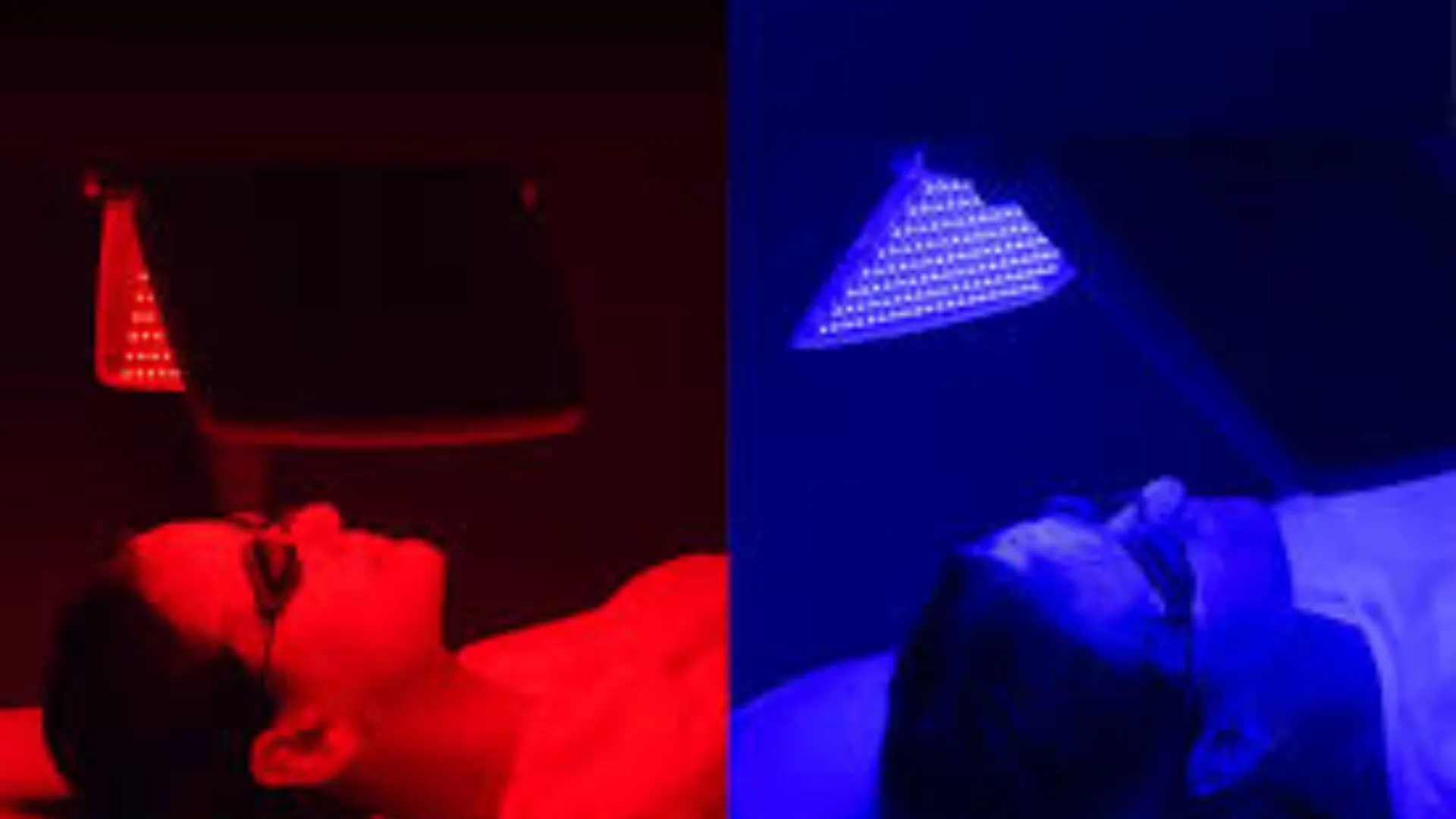As a dermatologist with decades of expertise, I’ve observed remarkable progress in photobiology, especially regarding how visible light—specifically red and blue wavelengths—affects the skin. What was once a specialized area has now become a core component of both professional dermatological treatments and at-home skincare routines. Dr. Aparna Santhanam, a seasoned dermatologist, elaborates on the potential roles of these wavelengths in skin protection.
Red Light-The Skin’s Friend for Remodeling and Rejuvenation:
This range of 620–750 nm is when red light works most effectively for penetrating deep down to the dermis. Its strengths are as follows:
- Collagen Stimulation: Red light encourages the growth of collagen and elastin by stimulating the fibroblast cells. Fine lines, wrinkles, and other types of drooping skin improve in appearance.
- Anti-inflammatory Effects: Regulation of cytokine activity helps red light reduce inflammation and is thus used in the treatment of rosacea, for example, and in aiding recovery after various skin treatments.
- Wound Healing: Red light increases mitochondrial function, enhancing tissue repair while helping to decrease scarring.
Clinical studies attest to its potential in photo rejuvenation, acne scar treatment, and promoting the healing of resistant wounds. It can increase resistance to environmental insult from pollution and oxidative damage due to constant red exposure to the skin.
Blue Light: A Double-Edged Sword in Dermatology
The 400–495 nm range of blue light mostly impacts the epidermis, and blue light has good and bad uses in dermatology:
The Positives
- Acne Control: Blue light is bactericidal in nature. It targets the acne-causing bacteria, Cutibacterium acnes (previously known as *Propionibacterium acnes*). It creates reactive oxygen species that destroy bacterial membranes without causing any damage to the skin.
- Oil Regulation: Blue light helps in regulating sebaceous gland activity, making it helpful for people with oily and acne-prone skin.
The Negatives
Photo-damage: Long-term exposure to blue light, whether it’s from screens, LEDs, or the sun, leads to the formation of free radicals, causing pigmentation issues, premature aging, and degradation of collagen.
- Melanin Impact: In people with darker skin, blue light may enhance hyperpigmentation, especially post-inflammatory hyperpigmentation (PIH).
Protective Measures Against Blue Light
Considering the potential damage that blue light causes, it is crucial to take preventive measures:
- Broad-Spectrum Sunscreen: This sunscreen generation carries iron oxides and antioxidants to act against visible light.
- Antioxidants: Topical antioxidants in the form of vitamin C, niacinamide, and ferulic acid help neutralize blue light-induced free radicals.
- Screen Protection: Minimize non-essential exposure to screens using blue light filters on devices and taking adequate screen breaks.
Clinical Integration
These therapies are usually applied together in a clinical setting for better results, especially in acne treatment. The red light helps in reducing inflammation and promoting healing post-acne, while the blue light deals with bacterial presence and oil production. This method, therefore, presents a non-invasive yet highly effective solution with a minimal recovery period.
While red light is a potent repair tool in dermatology, the effects of blue light depend on how it is used. Blue light is beneficial when controlled but harmful when not regulated. As dermatologists, understanding the unique benefits and potential risks of these wavelengths is key to crafting personalized treatments and ensuring the best outcomes for every skin type and concern.























